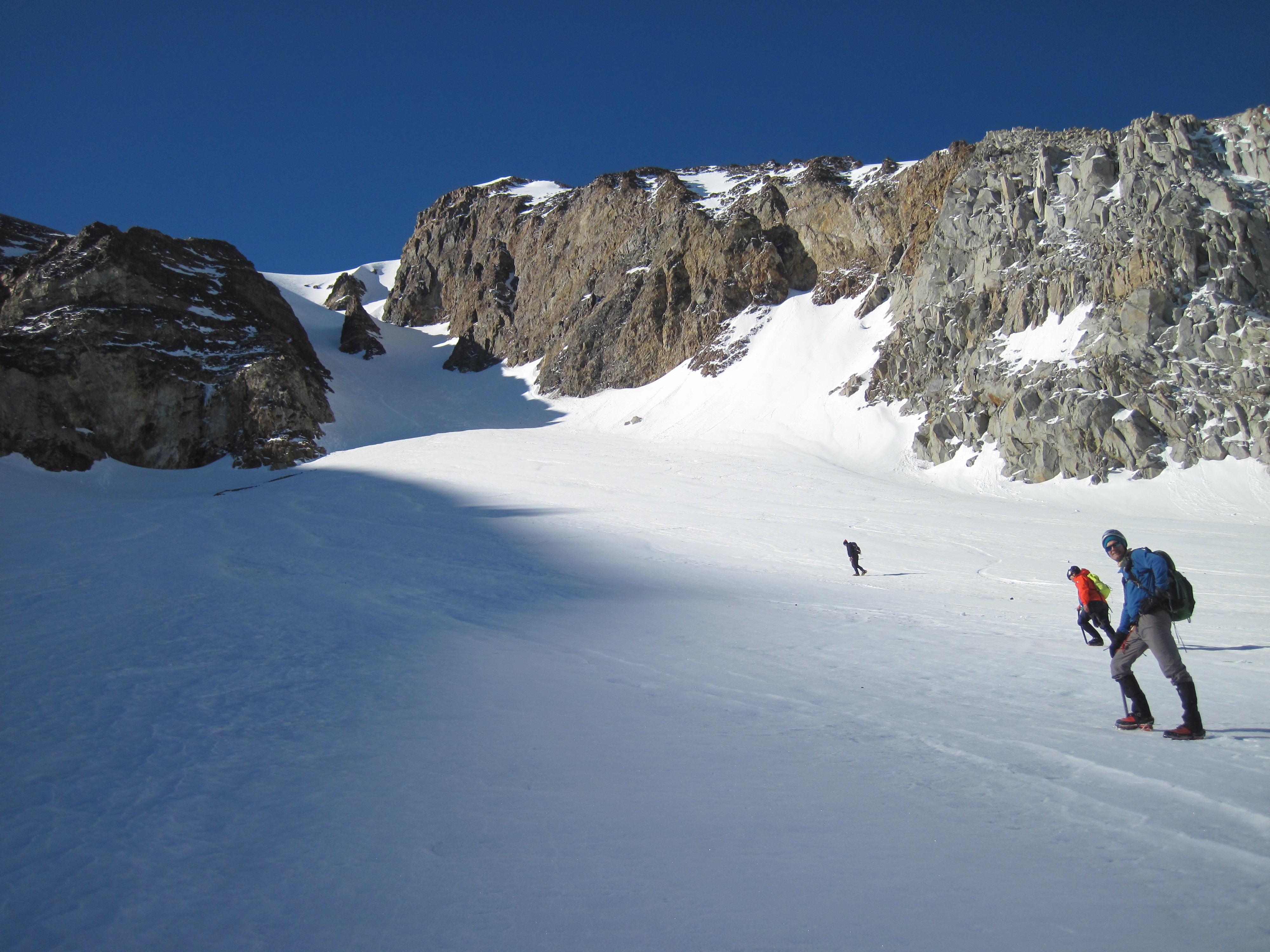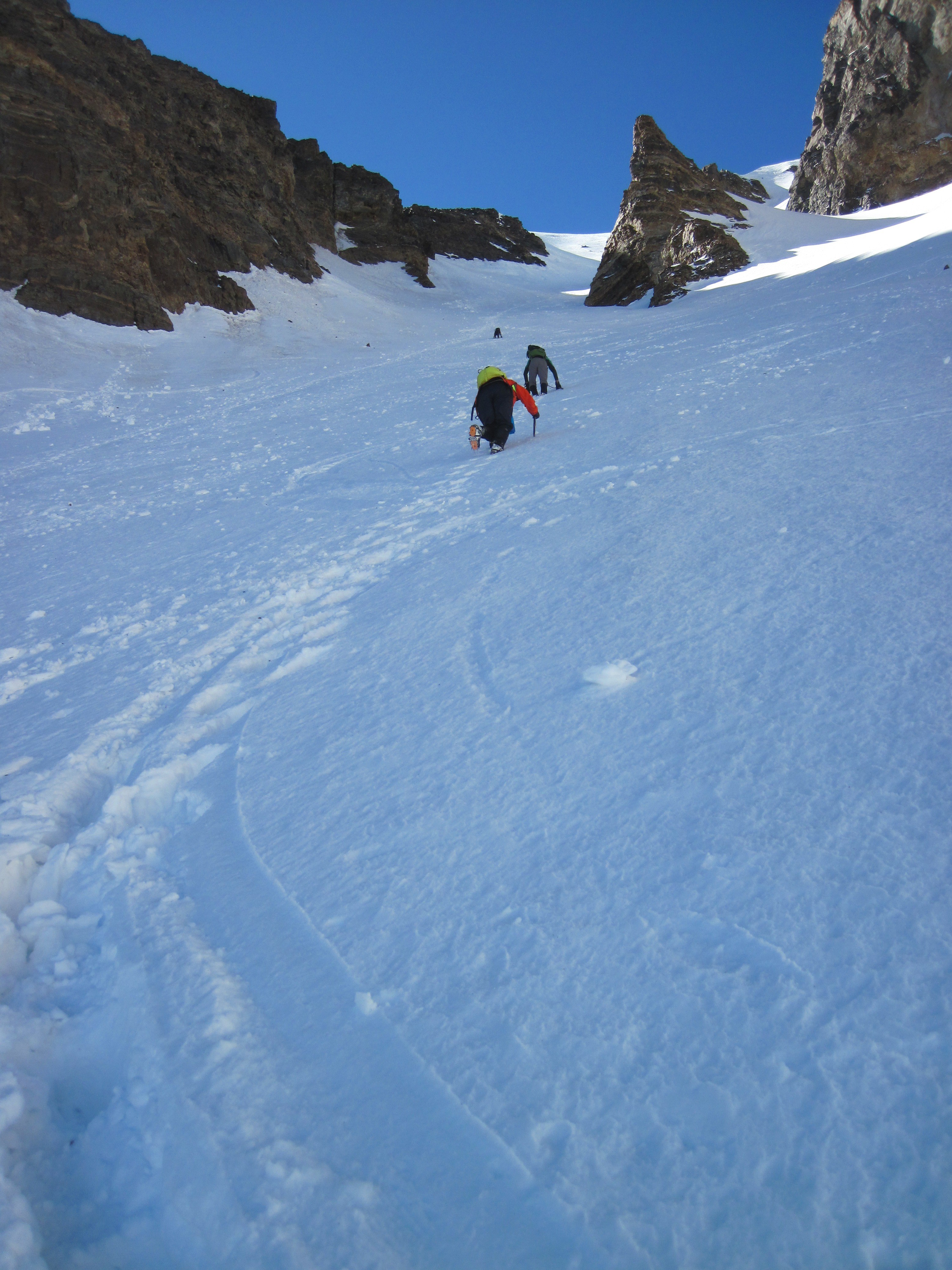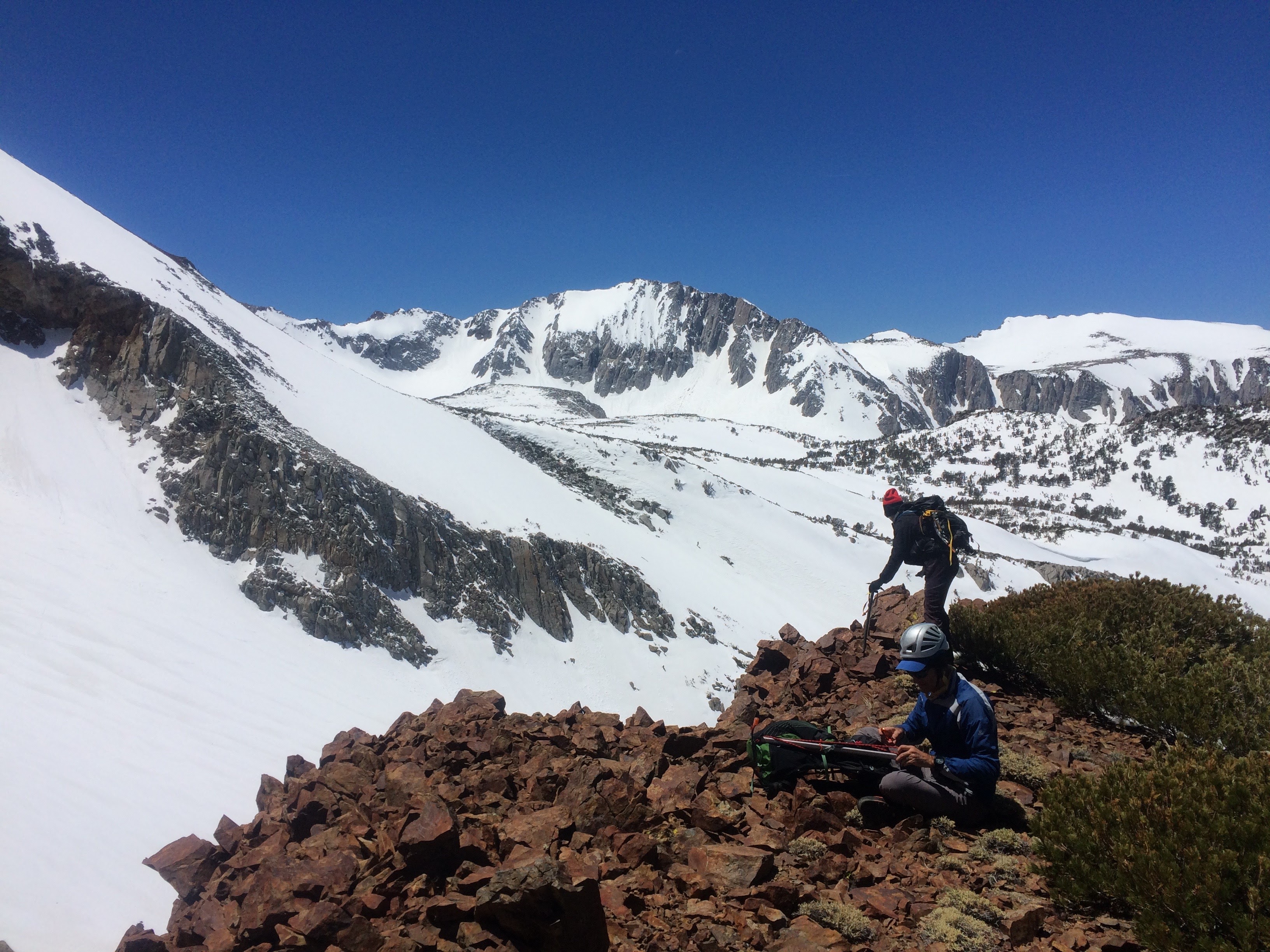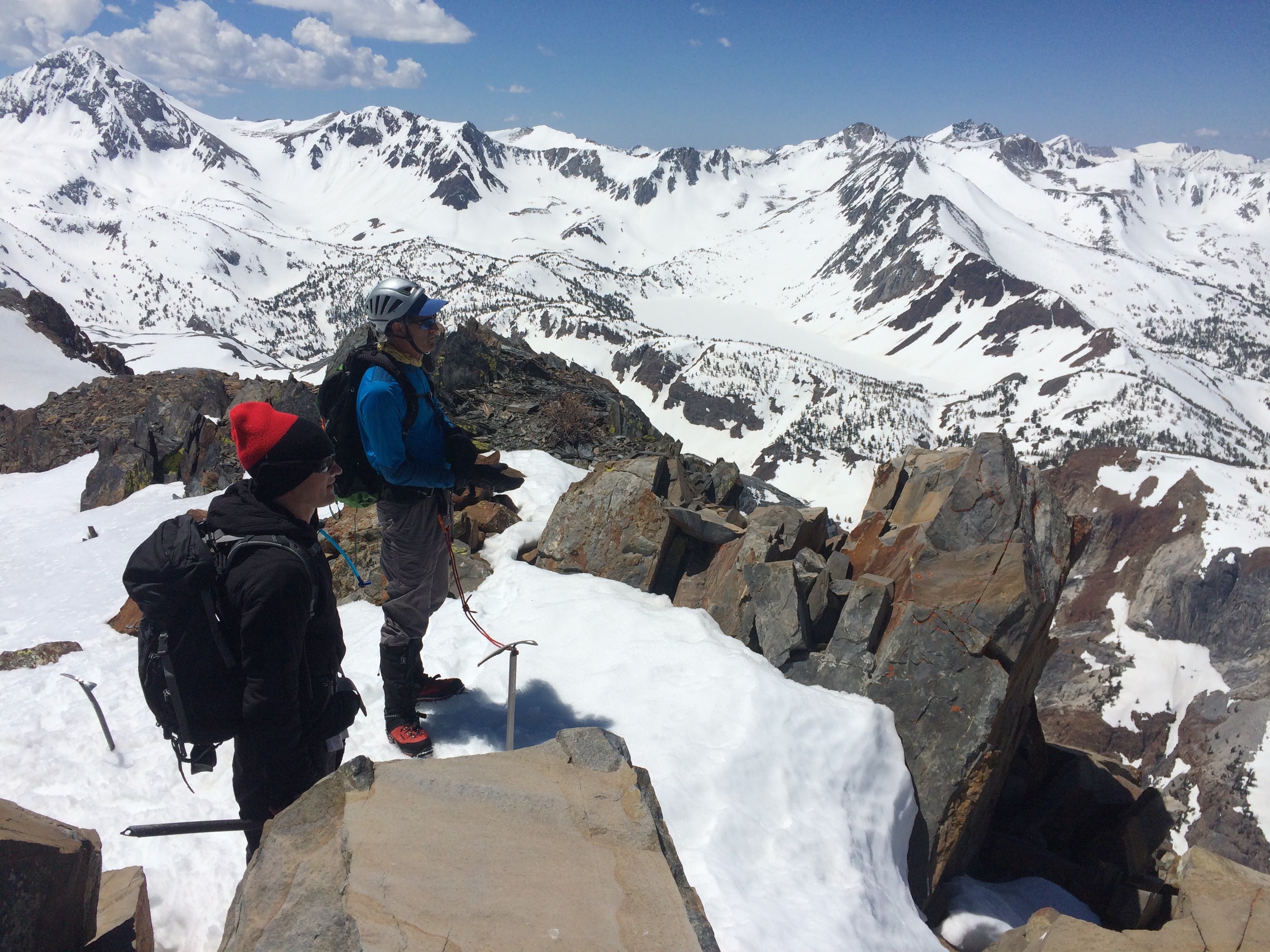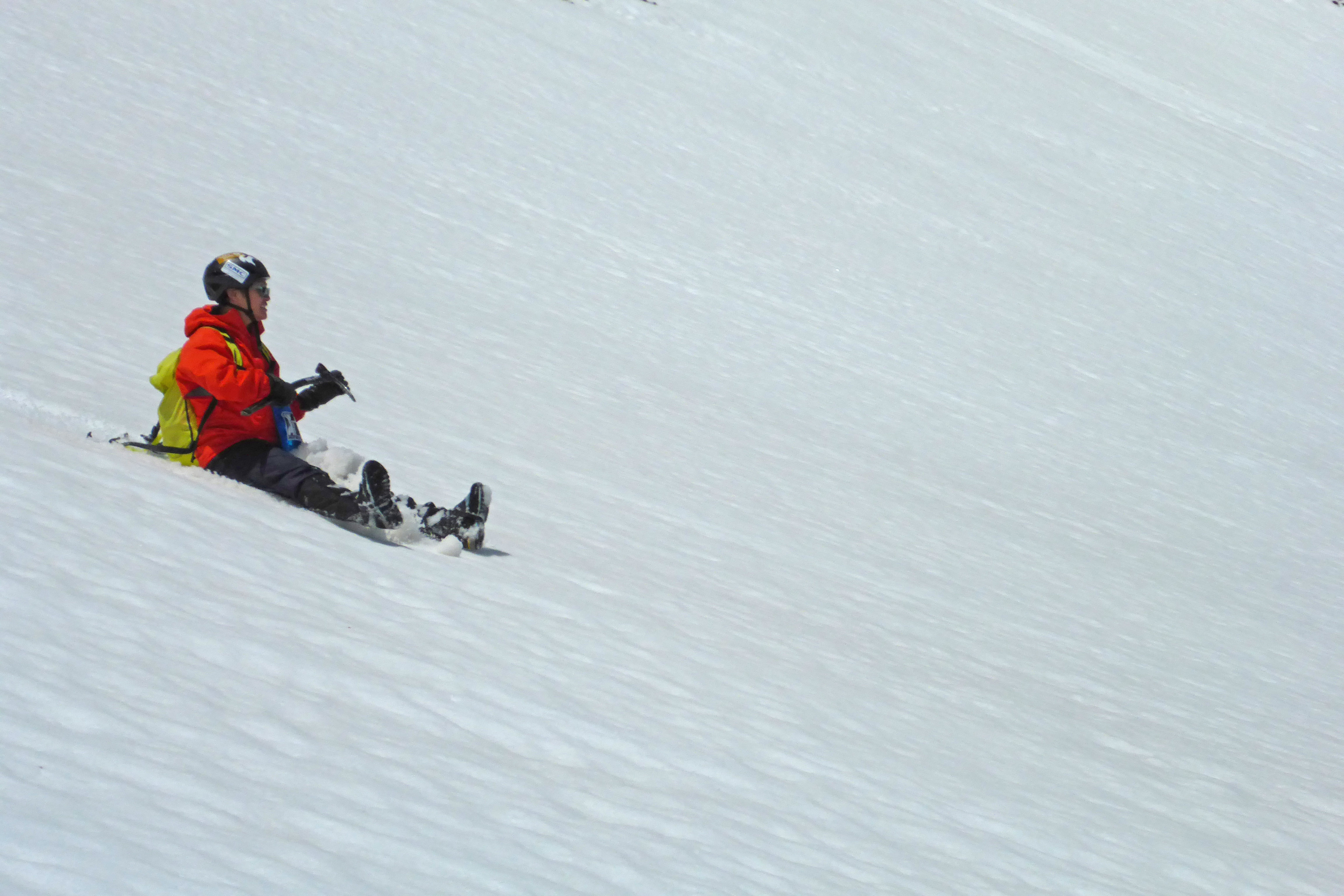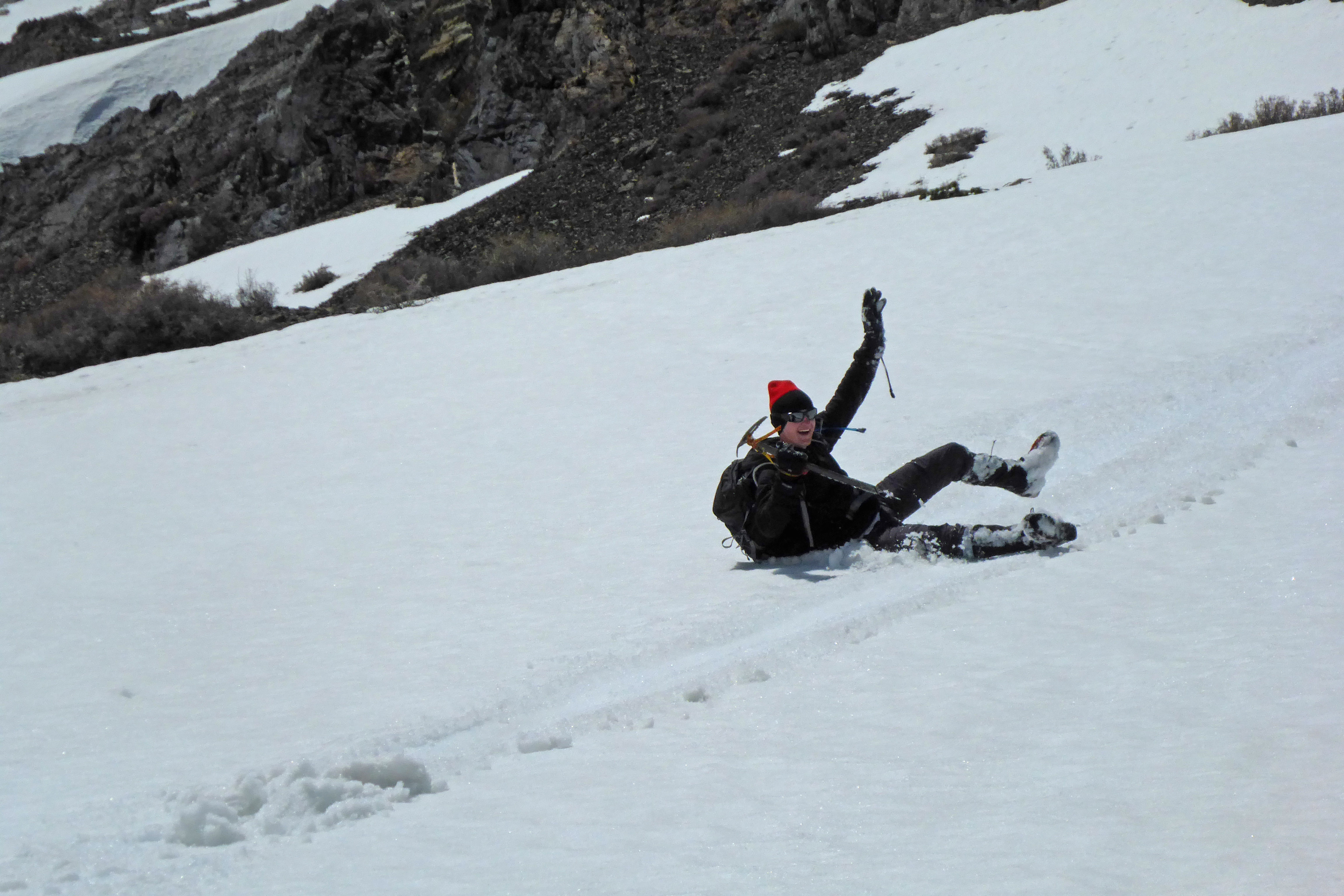Bloody Mountain & Mt Morrison
20-21 May 2017
Bill, Craig, Ting, and I teamed up for some springtime fun on the beloved Eastside. Craig joined us for Bloody Couloir on Saturday and took off to snowboard with his wife Sunday, as he had already bagged Morrison. It is impossible to convey the joy and adventure of snow climbing Sierra couloirs. Part of it has to be the ephemeral nature of snow climbing – all of it gone in a few short moments, never to be climbed in quite the same way again. From a more practical standpoint, it seems possible to glide up the mountain with all that pesky crud chute talus buried deep. This was especially true on Mt Morrison, which by all accounts is a bit of a choss heap on the east face. I was able to find some full-value alpine style climbin by going up and over a few mini-towers. Class three terrain in crampons always makes for a spicy time. Elusive moments of clarity were had by all as every corner held ice-axe dropping views of dark hulks of jagged rock draped in God’s light: the snowy wreaths of winters past.
One particularly enlightening encounter came on our approach to Bloody Couloir as a mountain guide was leading a client up the route to prepare for a climb of Mt Rainier. The topic of ice axe leashes came up – whether to tether the axe to your body or leave it free, to simply hold in your hands. The guide explained the current state of the practice, namely that:
When climbing unroped, or solo, it is advised to use a leash and tether the axe to your body for the simple reason that should you fall and lose the axe, you are really up shit creek. The tether gives you a chance to regain control in the event the axe slips from your clutches.
Correspondingly, when climbing in a roped team, it is advised to forgo the leash as your rope team can arrest and save your sorry ass should you lose the axe.
Now you may ask yourself, what reason would a climber have to forgo the leash? Are there any drawbacks? Both of the above scenarios considered the unwelcome prospect of losing the axe. Now imagine you have fallen out of control and are sliding in tandem with the very sharp pick – as a matter of fact it could impale your guts leaving a horrible mess all over the mountain. Now you see why it is advised to leave the leash behind when you have the safety net of a roped team.
As a matter of personal preference I employ a hybrid strategy wherein I have shortened the leash to a loop at the pick-shaft interface (top of the shaft) which is of such a length as to be loosely draped around my wrist and still easily transferred between hands. It feels more secure and allows for unencumbered manipulation. To hammer home the most important point…everything stated above is rendered moot if you are capable of following the one rule of climbing with an axe…1) DON’T DROP THE FREAKIN AXE! LOL. While I’m snow climbin I’m constantly imagining the manner in which I will arrest should I lose balance from my present position. Try it, it will actually make you feel more comfortable. Hopefully.
On a related note regarding safety, we started each of these day hikes very early in the morning (predawn). Our Saturday climb of Bloody Mountain brought one of the warmest days of the spring, which really increases the chances of wet slides as surficial snow melts and percolates through the snowpack. The guide and his client actually turned around before entering the couloir, possibly due to fatigue on the client’s part, but also, I suspect due to some concern with respect to the warming temperatures. (By the time they turned around, we were charging hard high in the couloir.) Furthermore a lot of these climbs put you on slopes right in the sweet spot for avalanche, something like 30-45 degrees from the horizontal. Ideally you will get an early start, climb your route before the sun hits it in any appreciable way, and find some nice firm, consolidated snow to charge on up. Descending an alternate route, such as a rock ridge or melted out talus field, is often tedious but a very solid idea. In fact, we walked northeast along Bloody Mountain’s ridgeline and descended a talus field. It took longer but was much safer than risking a wet slide in the warming couloir. And we got to nap on the warm rocks. Personally I’m planning to enroll in a few avalanche courses next season as I have been hooked pretty good by the backcountry ski bug. I think I will enjoy learning about the slope stability of a heterogeneous material which interacts dynamically with changing water pressures…wait is this geotechnical engineering?!??
I wanted to write a little more about this trip but I have to go to work. To summarize: snow climbing Sierra couloirs is fun, and even more so with good friends!
